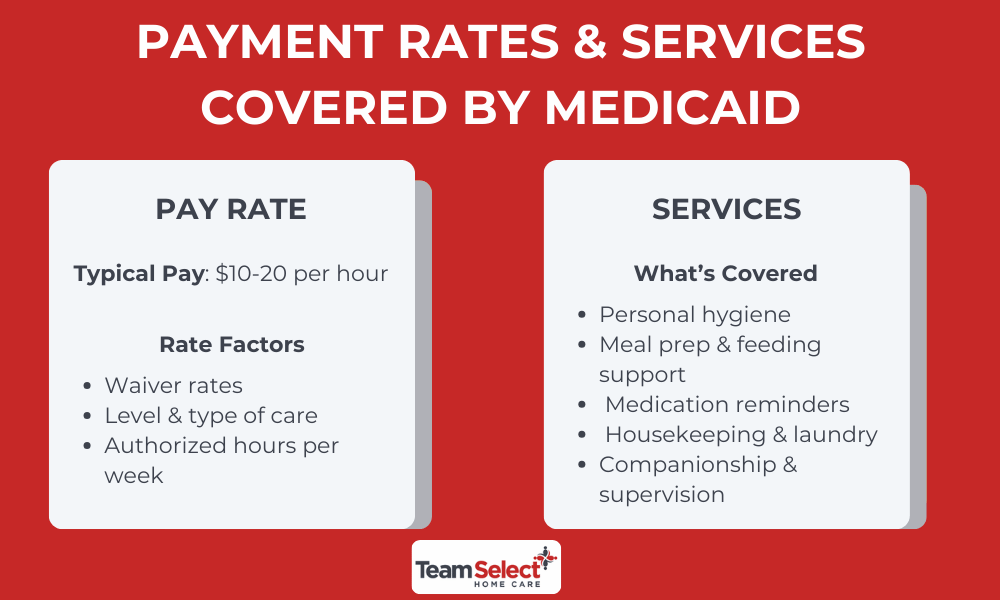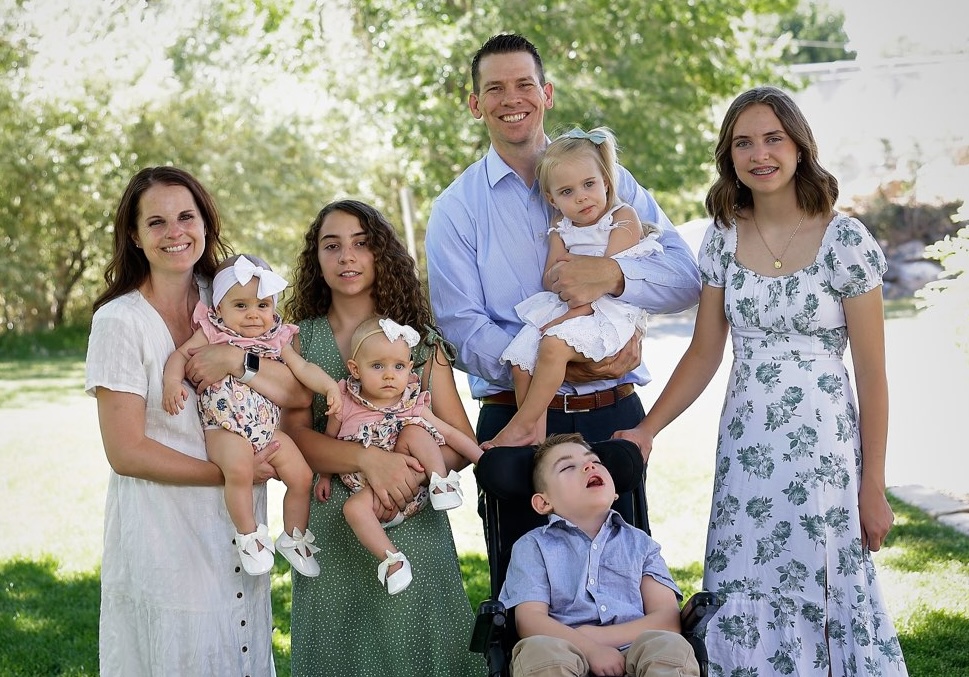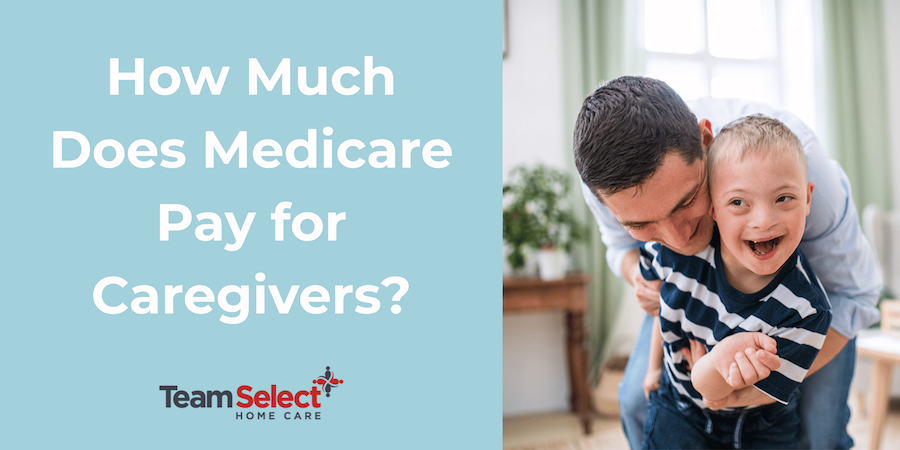Caring for a loved one is both rewarding and challenging, especially when financial concerns add stress to an already difficult situation. Many families wonder: how much does medicaid pay for a caregiver?
A Quick Explanation: Medicaid typically provides monetary support for caregiver services, which then allows companies like Team Select Home Care to pay family members for caring for their loved ones. Overall, the actual amount varies significantly based on your state, the type of care needed, and which medicaid program you qualify for.
The medicaid program offers financial assistance to help families care for an older adult, family member with disabilities, or care recipient who needs ongoing support. However, navigating the system can feel overwhelming. Some states offer higher payment rates, while others provide coverage on a limited basis. Understanding your options is the first step toward getting the help your family needs.
This guide will walk you through everything you need to know about medicaid caregiver payments, from eligibility requirements to actual payment rates. Whether you’re an adult child caring for an older relative or exploring professional care options, you’ll find the information you need to make informed decisions about your family’s care.

Understanding Medicaid Caregiver Payment Programs
Medicaid offers several pathways for caregiver payment, but not all programs are available in every state across the United States. The most common option is through medicaid waiver programs, which allow states to provide community-based services that help people stay in their homes instead of moving to nursing facilities.
Types of Medicaid Caregiver Programs
The medicaid waiver program typically falls into these categories:
- Home and Community-Based Services (HCBS) Waivers – These allow family caregivers to receive payment for providing care
- Structured family caregiving programs – Some states offer formal arrangements where family members become paid caregivers
- Consumer-directed programs – These give families more control over hiring and managing their own caregivers
Each state medicaid program operates differently. Some states have robust community-based services that pay competitive rates to family caregivers, while others offer more limited options. Unlike original Medicare or Medicare advantage plans, which typically don’t cover long-term personal care, Medicaid fills this crucial gap in available services.
It’s important to understand that becoming a paid caregiver through medicaid involves more than just caring for your loved one. You’ll need to meet specific requirements, complete training, and often work with government programs that oversee the care provided. The medicaid recipient must also qualify for services, and there are usually waiting lists for popular programs

Who Qualifies and Eligibility Requirements
Both the care recipient and the potential caregiver must meet specific eligibility requirements to participate in medicaid caregiver programs. Understanding these eligibility criteria helps families determine if they can access financial assistance through medicaid.
Care Recipient Eligibility
For someone to qualify as a medicaid recipient for caregiver services, they typically must demonstrate:
- Financial need: Income and asset limits vary by state
- Medical necessity: Requiring help with daily activities like bathing, dressing, or meal preparation
- Level of care: Needing care equivalent to what they would receive in a nursing facility
Common qualifying conditions include developmental disabilities, physical disability, and other chronic conditions that affect an older adult’s ability to live independently. The application process usually involves medical evaluations, financial assessments, and care needs assessments.
Caregiver Eligibility
Family members who want to become paid caregivers must also meet eligibility criteria. In most states, an adult child can be paid to care for an older relative, but there are typically restrictions. For example, spouses usually cannot be paid to care for each other, though some exceptions exist for specific circumstances.
Special Considerations
In some programs, informal caregivers may become paid caregivers after meeting training, background check, and eligibility requirements, depending on state rules. Some programs also provide additional support for eligible veterans or families dealing with specific conditions like developmental disabilities.
The family caregiving arrangement must meet state standards, which often include creating care plans, documenting services provided, and participating in regular evaluations. This ensures that the care recipient receives appropriate support while protecting both the caregiver and the Medicaid program.

Payment Rates, Services Covered, and Additional Support
Understanding what Medicaid pays and what services are covered helps families plan their finances and care arrangements. Payment rates vary significantly, but most programs aim to provide fair compensation while keeping costs manageable for state budgets.
Typical Payment Rates
The exact amount depends on several factors:
- Your state’s Medicaid waiver program rates
- The type and complexity of care provided
- Whether you’re providing personal care services or more specialized health services
- The number of hours a caregiver is authorized to work per week, based on the care recipient’s needs and state program guidelines, directly affects total compensation
Services Typically Covered
Medicaid caregiver programs usually cover assistance with daily activities such as:
- Personal hygiene and bathing assistance
- Meal preparation and feeding support
- Medication reminders and management
- Light housekeeping and laundry
- Transportation to medical appointments
- Companionship and emotional support
Some programs also include respite care, which provides temporary relief for primary caregivers. This supportive service is especially valuable for families providing intensive care to someone with alzheimer’s disease or severe physical disability.
Managing Costs and Additional Resources
Even with medicaid coverage, families may face out-of-pocket costs for services not covered by the program. However, several resources can help reduce these expenses:
Medicare Savings Programs help qualifying low-income individuals with Medicare-related costs, but they are separate from Medicaid caregiver payment programs and do not fund caregiving services. Additionally, some supplemental services may be available through community organizations or support groups.
Self-directed services give families more control over their care arrangements, allowing them to hire, train, and supervise their own caregivers within medicaid guidelines. This approach often works well for families who want to maintain more independence while still receiving financial assistance.

Getting the Support Your Family Deserves
Navigating medicaid caregiver programs can feel overwhelming, especially when you’re already managing the daily challenges of caring for a loved one. The good news is that you don’t have to figure it all out alone. Professional support can make the difference between struggling through the system and successfully accessing the care your family needs.
Many families find that connecting with experienced in-home care providers helps them understand their options and access available programs. These professionals understand how medicaid programs work and can guide you through the application process while ensuring you receive all the benefits you’re entitled to. At Team Select Home Care, we also offer state-specific resources to help your family.
When Family Caregiving Isn’t Enough
Sometimes, even with medicaid support, family caregivers find themselves overwhelmed by the demands of providing care. If you’re feeling stretched thin or if your loved one needs more specialized care than you can provide, professional help is available.
Team Select is committed to making a difference by standing alongside families in need and equipping our clinical team to deliver compassionate, lasting care. We know that choosing a home health provider comes down to trust, professional skill, and heartfelt concern for your family’s health.
We serve families across Georgia, Arizona, Colorado, Missouri, California, Texas, Massachusetts, Illinois, Indiana, Florida, Washington, Pennsylvania, New Hampshire, and North Carolina.
Professional Support That Makes a Difference
Our experienced team can help you in several ways:
- Medicaid navigation support: We’ll help you understand your options and access available financial assistance programs
- Private duty nursing: For families who need additional medical support beyond what family caregivers can provide
- Respite care services: Giving family caregivers the breaks they need to maintain their own health and well-being
- 24/7 clinical support: Our experienced team is always available to guide you through challenges
If you’re feeling overwhelmed doing it all on your own, remember that seeking help isn’t giving up – it’s ensuring your loved one gets the best possible care while protecting your own well-being. Team Select Home Care is more than just a healthcare provider; we’re a partner in your caregiving journey.
Contact us today to learn how we can support your family. Whether you need help navigating medicaid programs, require private duty nursing services, or simply want to explore your options, we’re here to help. Because every family deserves compassionate, professional support, one family, one story at a time.






Leave A Comment